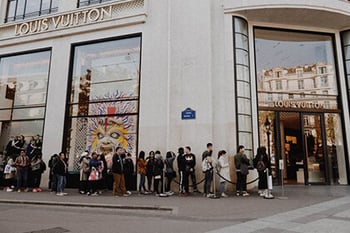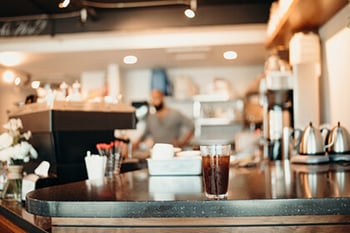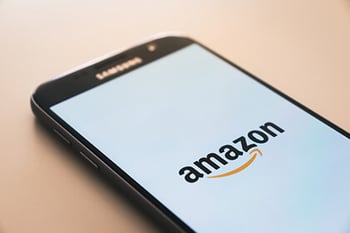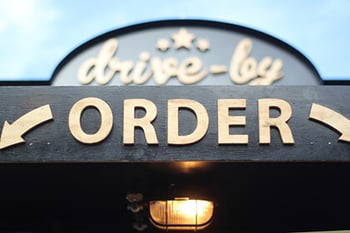With a combined value of £24.2bn and 217,286 outlets, the UK contract catering, retail, travel and leisure market is not only hugely fragmented, but also a complex environment that meets varied consumer needs, from institutional dining in hospitals and schools, to grab and go, street food, and fine dining.
Net margins are tight, between 3-7%. Labour, food, and rent costs are all rising.
Not all consumers are raving fans. Two of the biggest customer complaints are:
1) queue times are too long and
2) poor customer service.
 Consumers Don’t Like Queueing
Consumers Don’t Like Queueing
Americans spend roughly 37 billion hours a year waiting in line. That’s a big number, but it’s nowhere near the amount of time we think we spend in queues. Once you’ve waited for longer than three minutes, the perceived wait time multiplies with each minute. Waiting for five minutes, for example, makes you feel as though you’ve been waiting twice as long.
Research carried out by Adrian Furnham Professor of Psychology at UCL has identified that the optimal amount of time a customer is prepared to wait in line is five minutes 54 seconds before they think about leaving. That’s about sixth in the queue. After five minutes 54 seconds, the comfort begins to drops at a much quicker rate, decreasing to around 55% by 8 minutes.
The average UK lunch break lasts only 22 minutes. That’s not good news if you are a doctor or nurse, police officer, or teacher, or have a limited time for lunch.
Customer Satisfaction
According to the UK Customer Satisfaction Index (UKCSI) almost 1 in 4 customers are dissatisfied, with 78% of customers walking away from a bad experience. Operators have to work very hard to offer twelve consistently positive experiences to make up for the one bad one.
So how can operators improve the customer experience (and make more money)?
 Disrupt or Be Disrupted
Disrupt or Be Disrupted
These start-ups show us the future of Retail Food service - check-out free and redeploying labour to the front of house to engage customers. These different technologies can lift sales by over 10%, reduce food waste and streamline labour because they predict consumer buying habits and behaviours.
CaféX is a cluster of robotic coffee kiosks trialling different locations around San Francisco – the High Street, a cinema complex, and a Financial District location. Each store has the front of house staff to welcome customers and offer insights into their first origin coffee beans and their automated technology. Customers can pre-order on the app or walk in, order and pay on an iPad. A robot arm then moves a cup to the coffee machine for filling, then to a window for collection by the customer. This takes around 45 seconds. There are no queues, making CafeX a perfect solution for people on the go.
Eatsa is ‘an end-to-end technology suite for restaurants that integrates the entire process from digital ordering channels to fulfilment to pick-up’. In simple terms, this means customers walk in, place their order on an iPad, and collect their food from a flashing window box. There is a bank of order pads so no queues. This saves on labour for the operator. When I visited Eatsa, the experience felt soulless albeit I was in and out in a few minutes.
The pioneers of ‘Just Walk Out’ technology, Amazon Go, spend several million dollars on each store they open. Customers scan a QR code from their phones, walk in, shop, and just walk out. A receipt of goods purchased appears on your phone moments later. This is disruptive technology at its best.
The experience of walking in, shopping, and walking out is magical. No queues, no scanning, no check-outs. Staff are on-hand to assist customers and to recommend new products. Amazon Go arrives in the UK this year and will target the High Street, airports, offices, and compete with grocery, convenience stores, and grab-and-go lunch offers in high volume locations.
It is a sobering thought that within five years the contract catering model may look completely different from how it operates today. Those that do not embrace new technology and innovation may drop away. Those that do, and can scale, will be the new market leaders in the 2020s. NB: According to a new survey by Omnico, 58% of contract caterers believe using technology to reduce waiting times in queues will improve footfall. 54% of contract caterers want technology to give them more accurate predictions of food and footfall so they can solve their number one problem – food waste.
NB: According to a new survey by Omnico, 58% of contract caterers believe using technology to reduce waiting times in queues will improve footfall. 54% of contract caterers want technology to give them more accurate predictions of food and footfall so they can solve their number one problem – food waste.
You’re invited to join the debate. If you want to disrupt in 2019 and beyond, please email: Julian@Hungrytech.co.uk
© Julian Davis Smith, Founder, Hungry Tech, Centre for Disruptive Innovation and Technology.
.png?width=1571&height=766&name=CFD%20knife%20and%20fork%20logo%20(carbonfriendlydining.org).png)


